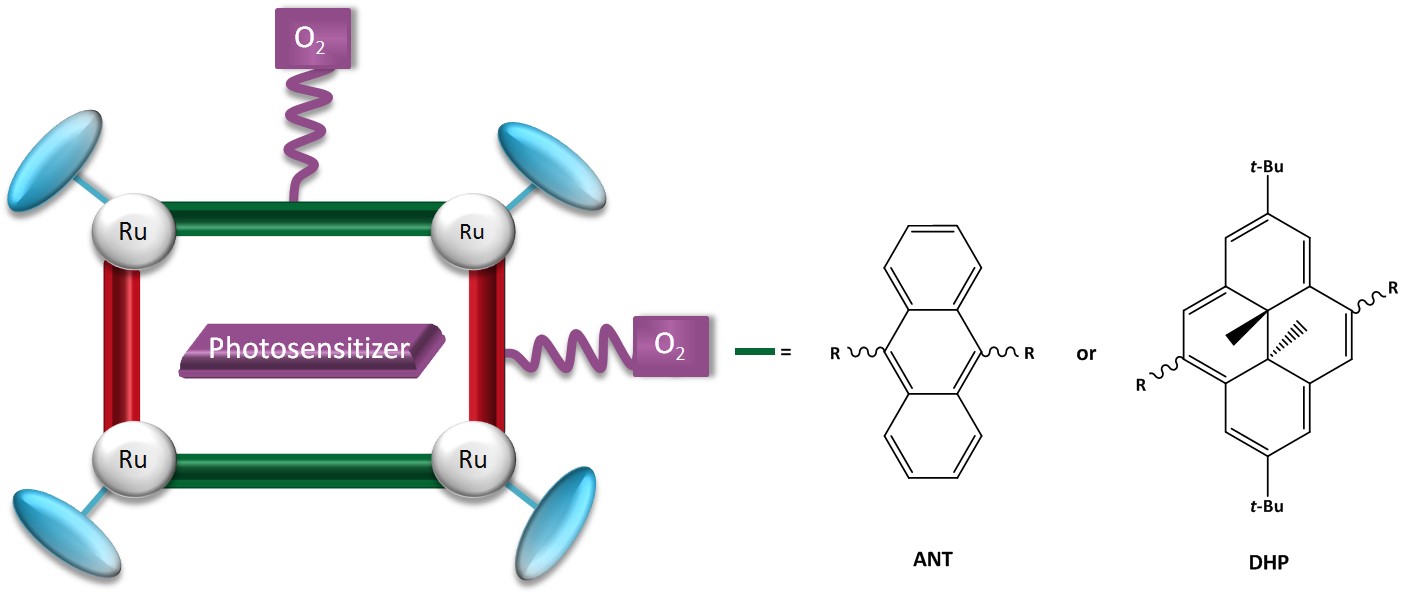Development of organometallic assemblies for PDT
Photodynamic therapy (PDT) treatments represent a promising alternative to treat cancers. PDT involves the injection of a photosensitizer, which is later on activated by light at a specific wavelength. Upon an irradiation in a spatial-controlled area, the photosensitizer reaches a high-energy triplet state and, when returning to its ground state, an energy transfer toward cellular oxygen occurs. The reactive oxygen species appear in the surroundings of the irradiated zone and can later destroyed cancerous cells. Therefore, such PDT treatments need oxygen to be effective, which can be problematic when treating hypoxic cancers.[1]
Some already known compounds can be converted into their endoperoxide forms to reversibly transport singlet oxygen (1O2), such as anthracene (ANT)[2] or dimethyldihydropyrene (DHP)[3]. They offer great perspectives for biological applications, especially for PDT treatments.
The project consists of preparing metalla-assemblies to transport both the photosensitzer and 1O2 to cells. DHP or ANT units can be attached to the assembly as connectors between the dinuclear arene ruthenium clips or inserted as appendages on the different building blocks. The cavity of the metalla-assembly can also be used to transport a photosensitizer.[4]

[1] Dolmans D. E. J. G. J., Fukumura D., Jain R.K., Nat. Rev. Cancer 2003, 3, 380.
[2] Asadirad A. M., Erno Z., Branda N. R., Chem. Commun. 2013, 49, 5639.
[3] G., Credi A., Silvi S., Cobo S., Bucher C., Philouze C., Saint-Aman E., Lafolet F. Chem. Commun., 2015, 51, 13886-13889.
[4] Schmitt F., Freudenreich J., Barry N. P. E., Juillerat-Jeanneret L., Süss-Fink G., Therrien B., J. Am. Chem. Soc. 2012, 134, 754.